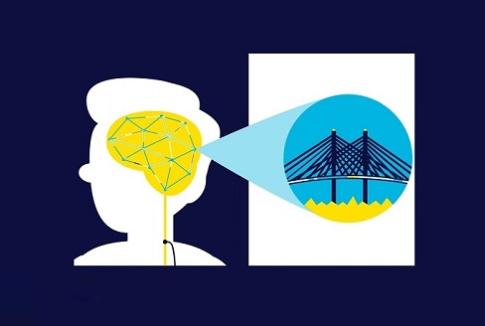
Vivistim Therapy for Stroke Recovery
Vivistim is a breakthrough treatment for stroke survivors to improve hand and arm function. Vivistim is the first FDA-approved neurostimulation device to pair VNS (vagus nerve stimulation) with your rehabilitation therapy and daily activities. This pairing helps strengthen the brain connections needed to improve hand and arm function. It’s the only system of its kind, and it is proven safe and effective.
The Vivistim System is designed to help increase neuroplasticity to help you improve your hand and arm movements.
Vivistim treatment includes three therapeutic components:
- Implantation of the Vivistim device during a short out-patient procedure
- Therapist-led Vivistim Therapy in a rehabilitation setting
- Self-activated Vivistim Therapy at home or outside the rehabilitation setting
If you are a chronic ischemic stroke survivor and have not regained arm and hand function six months after your stroke, this treatment might be right for you.
To receive Vivistim treatment, you must be referred to UHS Neurology by a health care provider, where we will evaluate you to determine whether you are eligible.
How does Vivistim Therapy work?
During rehabilitation exercises and at-home activities, Vivistim is activated to gently stimulate the brain via the vagus nerve. This boost to the brain helps strengthen and create new neural pathways, like building a new bridge to bypass the damaged area. When the Vivistim Therapy boosts the brain’s neural activity, it builds lasting connections that continue to work even when Vivistim is not in use.
Watch on YouTube >
What is Paired Vagus Nerve Stimulation (VNS)?
The vagus nerve is the longest nerve in the body and the superhighway of the nervous system. It sends messages between your brain and many parts of the body. Gentle electrical stimulation of the vagus nerve activates the parts of the brain that are important for motor learning.
For over 25 years, safe VNS implantation procedures have been performed to treat other nerve-related conditions such as epilepsy.
What is the Process?
- Vivistim is implanted a same-day, outpatient procedure. The small medical device (similar to a pacemaker) that can fit in the palm of a hand, is placed under the skin in the upper left chest wall and neck region during a short outpatient procedure.
- A few weeks after the Vivistim device is implanted, when the stroke survivor is cleared for physical activity by the surgeon, they will start Vivistim Therapy with a therapist in a rehabilitation setting. The therapist will use a remote that sends a wireless signal to the implanted device via a laptop computer which delivers a brief, gentle pulse to the vagus nerve while the stroke survivorperforms various rehabilitation tasks. This in-clinic rehabilitation therapy typically lasts 6 weeks, a few times per week.
- Vivistim Therapy is also done outside the rehabilitation environment (e.g. at home) and patients are encouraged to start this part of rehabilitation as early as the first day of therapy in the clinic. Patients activate a session on their own with a simple swipe of the Vivistim Magnet.
The Ideal Vivistim Candidate
- Chronic ischemic stroke survivors
- Six months or more post-stroke
- Have moderate to severe upper extremity impairment
- Have plateaued from previous ongoing rehabilitation
- Maintain some active arm motor function, including in the wrist, thumb, and at least two fingers
Frequently Asked Questions
How do I find out if I am eligible for Vivistim Paired VNS Therapy?
To determine if you are eligible for Vivistim Paired VNS Therapy, you will undergo an initial assessment with a rehabilitation professional to evaluate your current hand and arm function. You will then be referred for a consultation with a surgeon to determine if you are a good candidate for the implantation procedure.
Can I feel the implant?
Most people will not feel the implant under their skin. Immediately after the procedure, you may have some soreness in your upper chest where the device was implanted, but it should resolve in time.
Can I feel the stimulation?
Typically, people do not feel the pulses during stimulation. Settings can be adjusted by your clinician or therapist during your in-office visit to make Paired VNS comfortable for you.
What sort of improvement can I expect?
Response to treatment varies for each person. In a clinical trial, Paired VNS Therapy study subjects experienced 2-3 times more improvement in hand and arm function than those who received intense rehabilitation therapy without Paired VNS.
How quickly will it work?
In a clinical trial, Paired VNS Therapy study subjects reported improvement as early as 2-3 weeks. Individual results may vary.
How long does the battery last?
The battery is expected to last approximately 5 years at typical settings. Your specific situation and settings may result in shorter or longer battery life. During scheduled visits with your clinician, they will use the system software to check the battery status of your implant.
What happens if I stop using it?
As you perform your prescribed at-home therapy, you may continue to see improvement in your hand and arm function. Stopping Paired VNS Therapy does not inherently have adverse effects but may slow down or stop your progress. Talk to your clinician to learn more.
Can the system be removed when I have achieved my goals, or if I change my mind?
The Vivistim System may be removed at any time, in a same-day outpatient procedure. Depending on your surgeon’s decision, all or part of the implants can be removed at any time. Talk with your surgeon for further details.
Are there side effects?
Some common side effects of VNS Therapy include hoarseness, shortness of breath, throat irritation, pain, and coughing. While not observed with Vivistim, infection is a risk associated with implantable surgeries.
Does Paired VNS Therapy use medication?
No. Paired VNS Therapy is an implanted device and system used in conjunction with rehabilitation therapy.
Can I speak to someone who has used the Vivistim Paired VNS System?
Yes! Reach out to our Clinical Navigator Team at 844-VIVISTIM (844-848-4784), Option 2 or customerservice@microtransponder.com to put you in touch with a Vivistim user or a rehabilitation professional specialized in Paired VNS Therapy.
Can I travel?
Yes. There are no specific travel restrictions. Flying will not affect the system or the delivery of stimulation. You may want to inform the airport or security personnel that you have an implant by showing your Patient Identification Implant Card. Properly operating metal detectors are not expected to affect the Vivistim System.
Are there any restrictions after the surgical procedure?
Once you have the Vivistim System, you should not undergo the following:
- Diathermy
- Vagotomy
Also, talk to your physician if you wish to participate in contact sports.
Are there MRI restrictions?
Certain types of MRI can be performed, provided specific guidelines are followed. Before scheduling an MRI, contact your Vivistim surgeon or physician.
What should I do if I lose my Vivistim Magnet?
For a replacement magnet, please contact our Customer Service Team at 855-628-9375 or customerservice@microtransponder.com.
Will my Vivistim Implant turn on if I walk past a magnet, like one on a refrigerator?
Walking past a household magnet will not affect an implanted Vivistim device. Household magnets are generally not strong enough to activate the Vivistim device. Stronger magnets would need to be swiped directly over the implant area to affect the Vivistim device.
What is the purpose of the Patient Identification Implant Card?
The wallet-sized card lets others know you are using the Vivistim System. It will also make them aware of MRI conditions, your physician’s name and phone number, and which product you have



